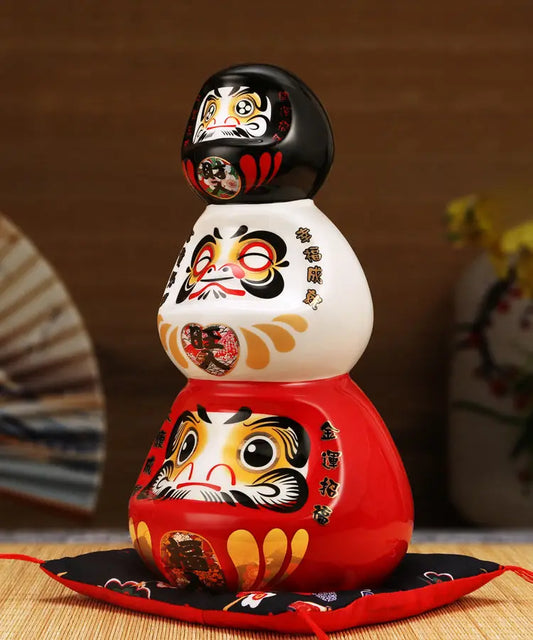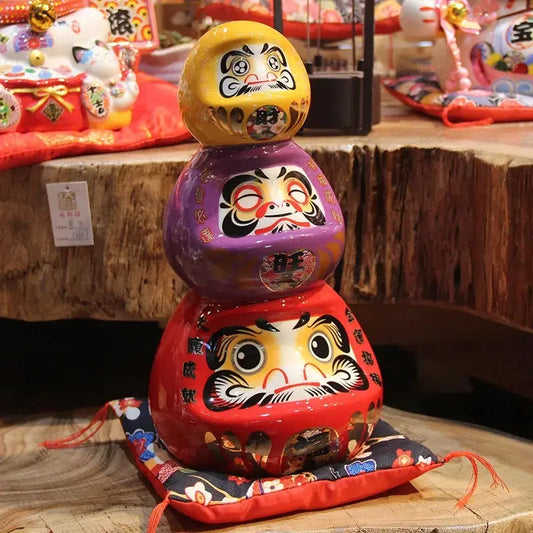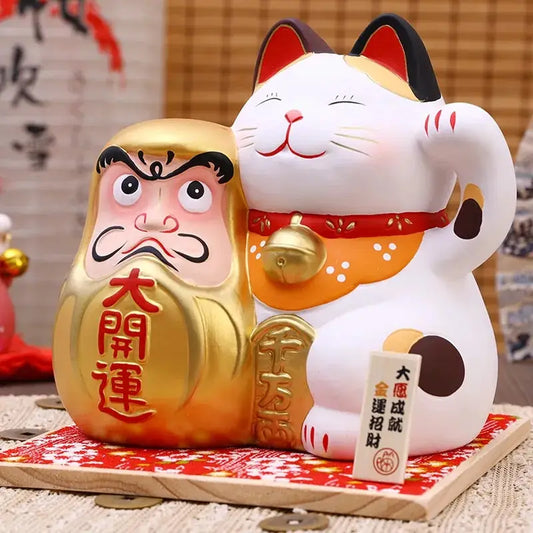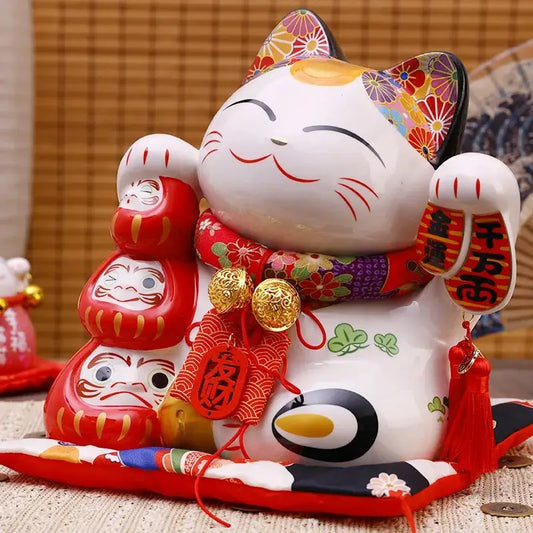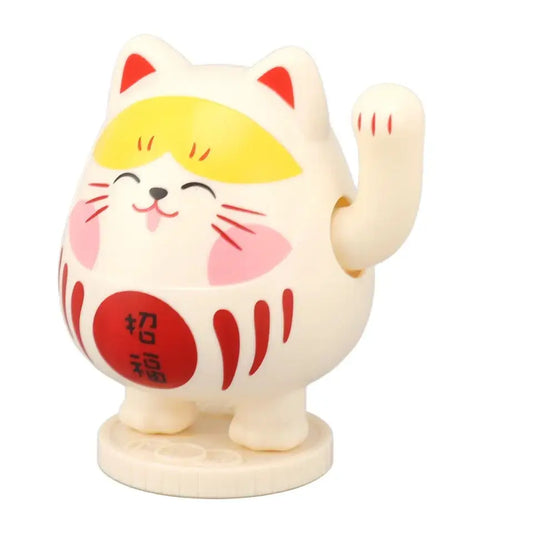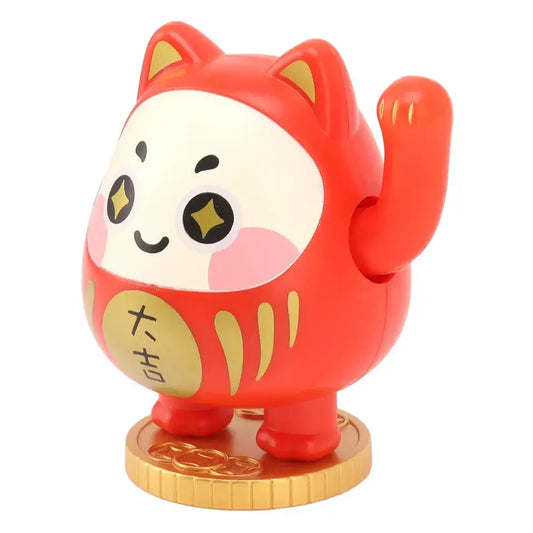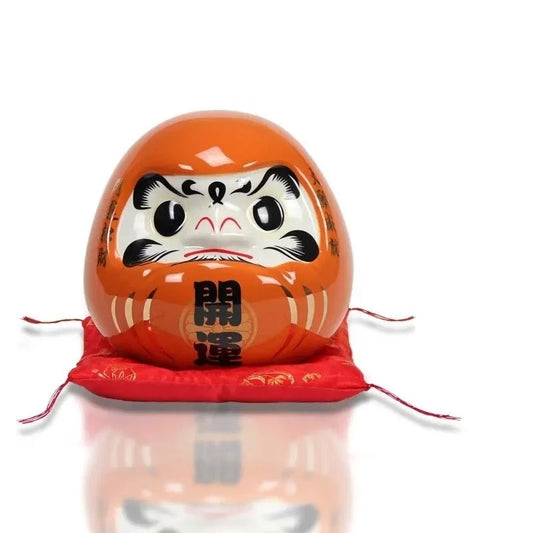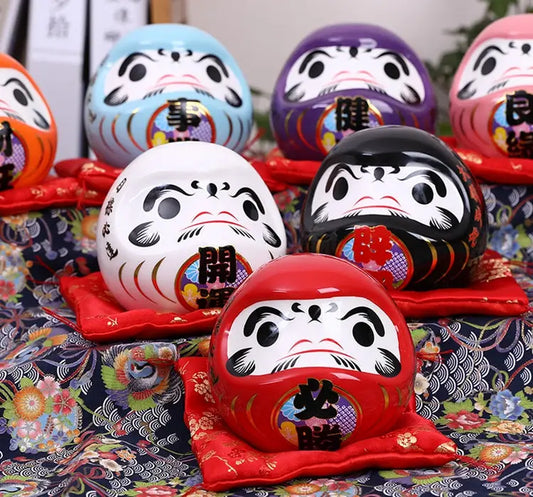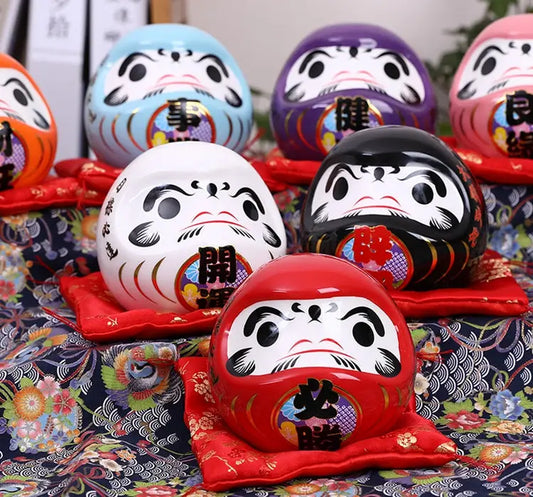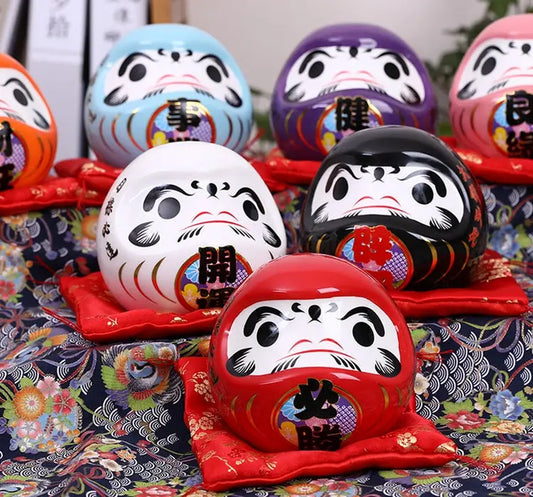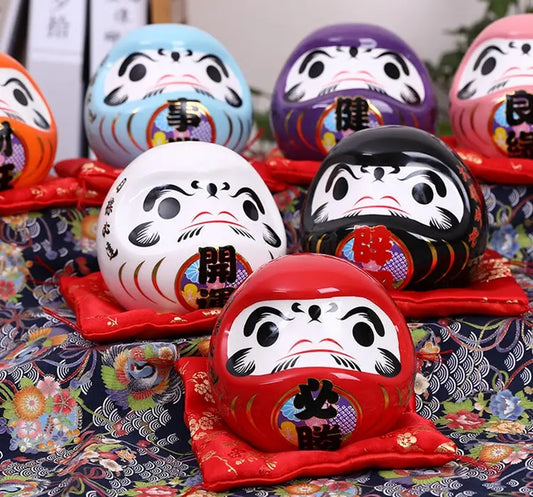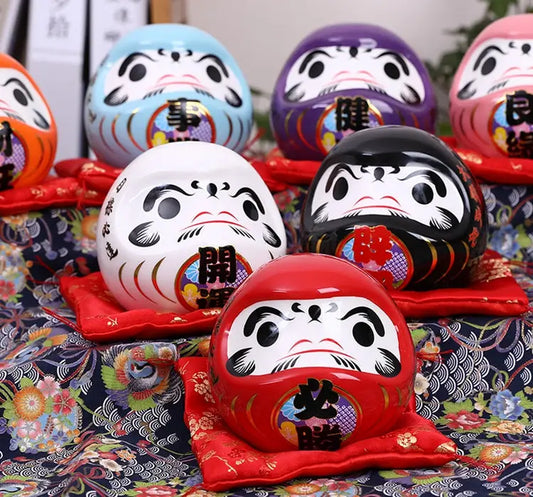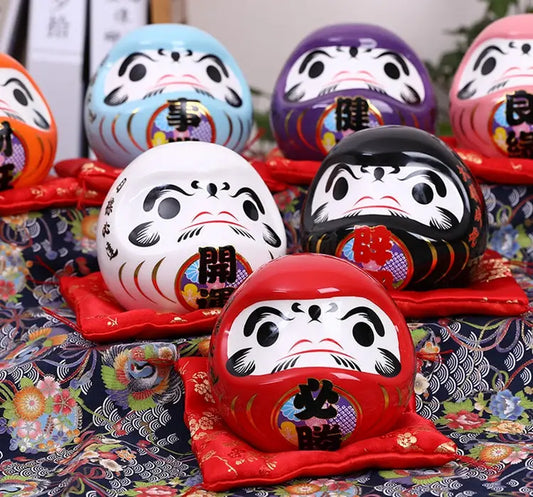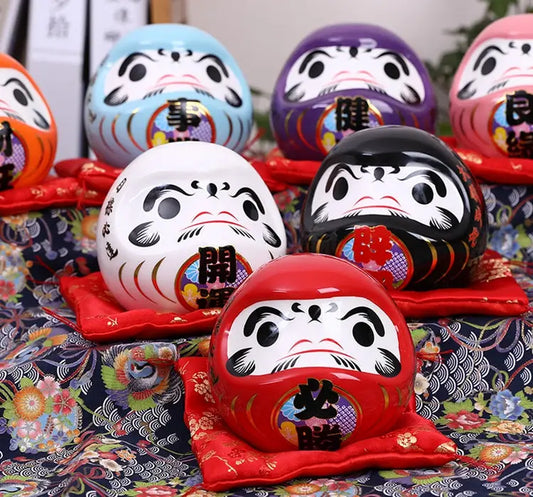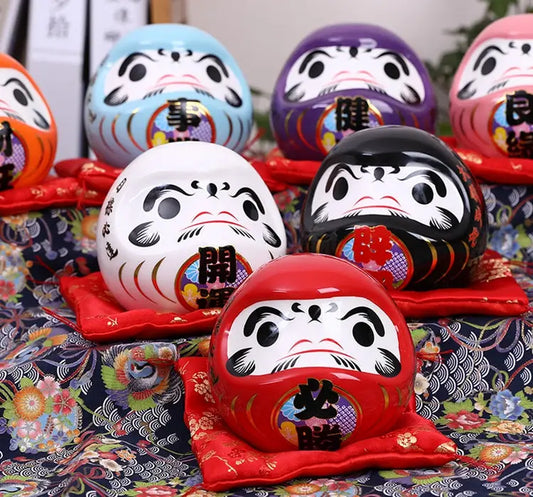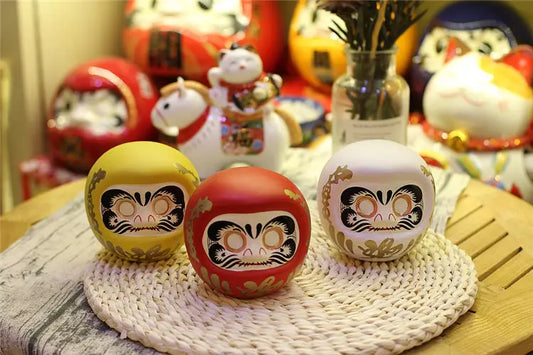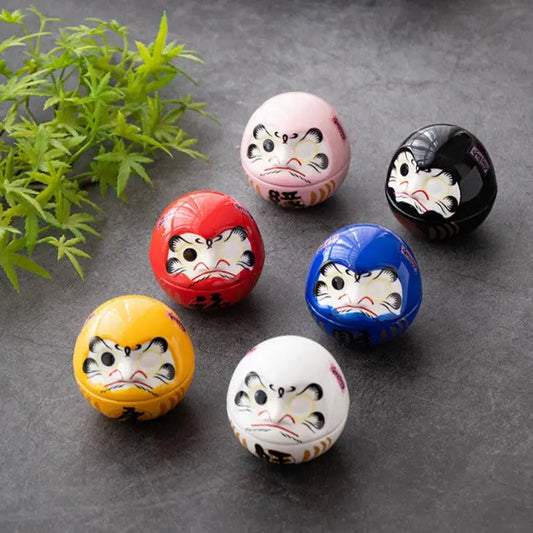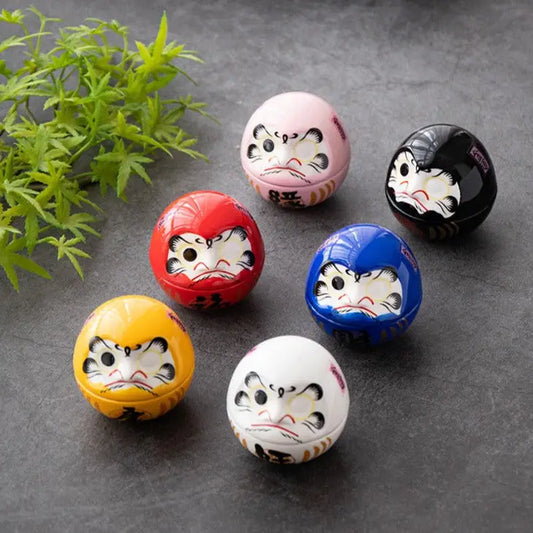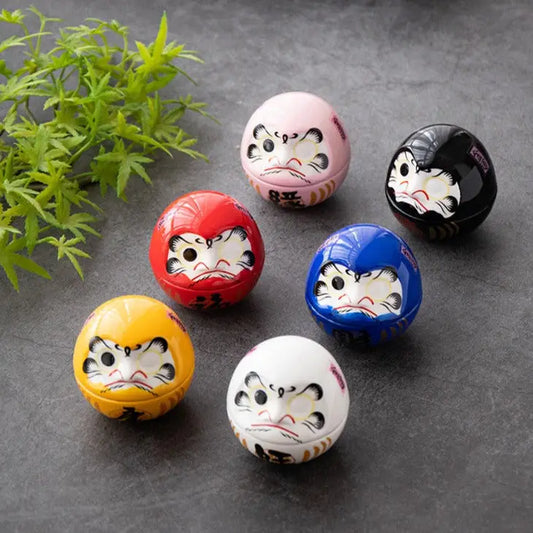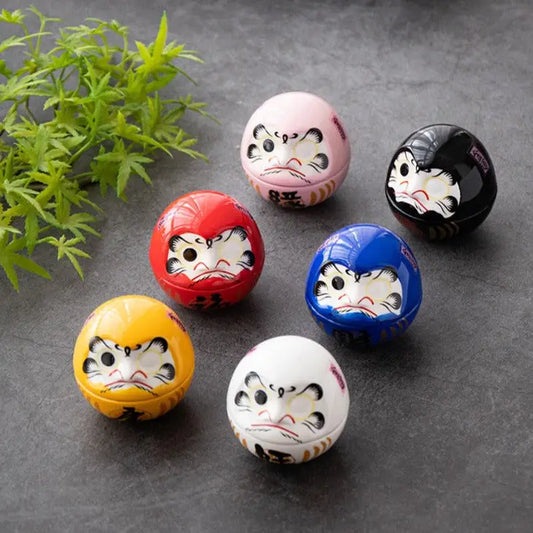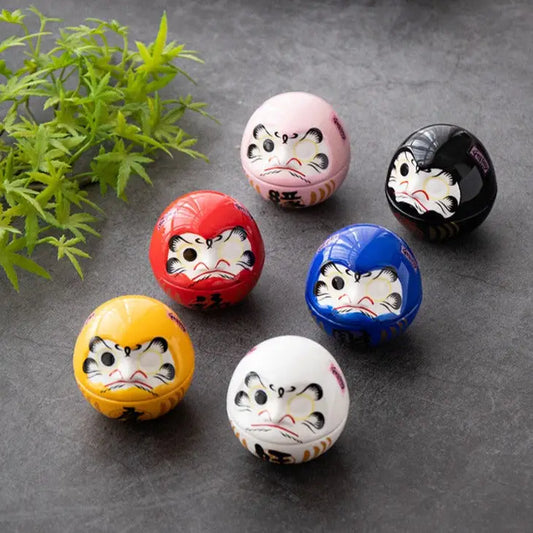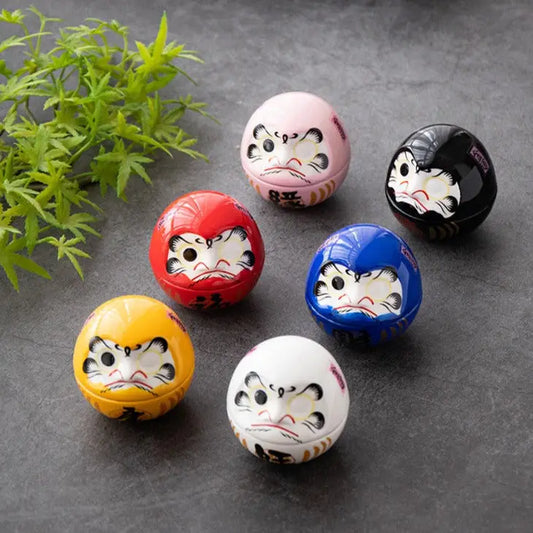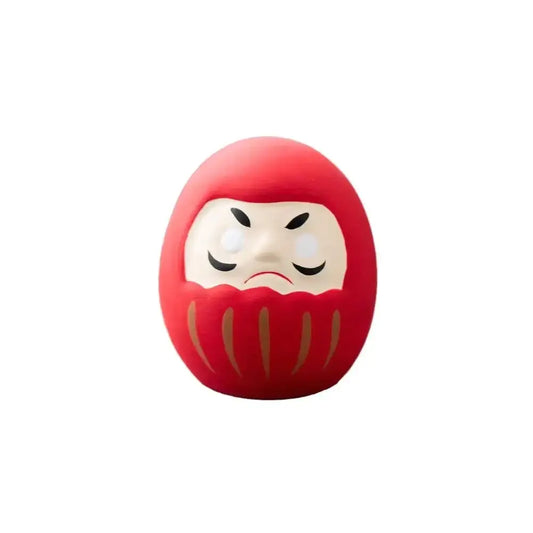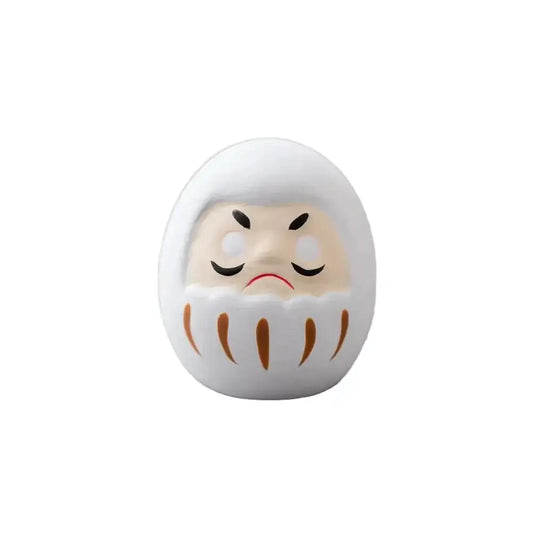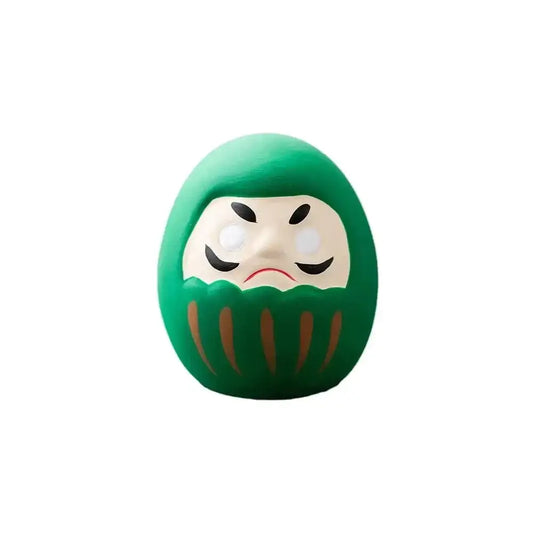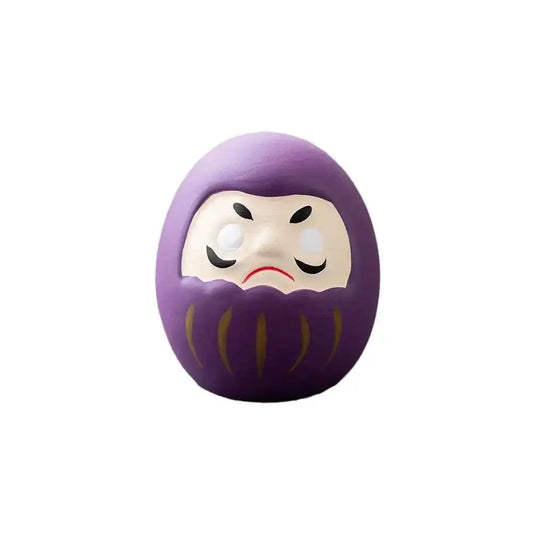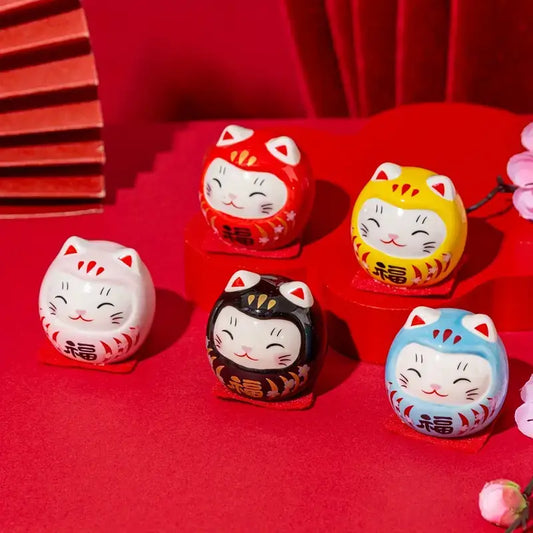Awaken Your Goals: The Inspiring World of Daruma Dolls
Welcome to a world where tradition meets personal transformation. Daruma dolls are more than decorative ornaments — they are living symbols of perseverance, self-discipline, and goal-setting. Rooted in Japanese culture and revered for centuries, Daruma dolls serve as motivational companions, encouraging you to stay focused on your dreams and resilient in the face of challenges.
Each Daruma, with its bold red body and intense wide eyes, tells a story. A story of a wish made, a path pursued, and a goal finally achieved. Whether you're manifesting a personal ambition, building a business, or pursuing inner peace, the Daruma serves as a powerful visual reminder to never give up.
In our curated collection, you'll find Daruma dolls in various colors and sizes, each carrying specific meanings and energies. From classic red for luck and success to gold for wealth and green for health, there's a Daruma ready to match your intention. Let this ancient talisman become a part of your modern journey. The question is: what will you wish for?
From Zen Roots to Global Icons: The History of Daruma Dolls
The story of the Daruma doll begins with Bodhidharma, a Buddhist monk credited with bringing Zen Buddhism from India to China and eventually Japan around the 6th century. Known for his intense discipline and meditative focus, Bodhidharma is said to have meditated for nine years without moving, a practice that inspired the creation of the Daruma's unique shape and expression.
Traditional Daruma dolls are modeled after this monk, symbolizing unwavering determination. Their rounded, hollow bodies are weighted at the bottom, allowing them to return to an upright position when tilted or pushed. This feature is a metaphor for persistence: "Nanakorobi yaoki" (七身八起), meaning "fall down seven times, get up eight."
Over time, Daruma dolls became deeply integrated into Japanese culture. They were often used in temples during New Year celebrations, where people would paint in one eye of the doll while making a wish or setting a goal. Once the goal was achieved, the second eye would be filled in as a gesture of gratitude and accomplishment.
| Era | Cultural Significance | Evolution of Design |
|---|---|---|
| 6th Century | Origin from Zen monk Bodhidharma | Rounded body, no limbs |
| Edo Period | Popularized as good luck charms in temples | Painted red, blank white eyes |
| Modern Day | Global symbol for motivation and resilience | Color variants, collectible items |
Daruma dolls have transcended their spiritual roots to become global symbols of grit and manifestation. Whether placed on an altar, a desk, or a shelf, they quietly remind us to keep moving forward.
More Than Just a Doll: Why Daruma Inspires Millions
Daruma dolls offer a rare blend of artistic tradition and personal empowerment. Their unique aesthetic and symbolic meaning resonate with people from all walks of life. But why are they so universally beloved?
At their core, Daruma dolls are tools for goal visualization. Unlike other ornaments, they are interactive. You begin your journey by painting one eye on the blank Daruma while clearly setting your intention. This act itself is powerful — it transforms a mere thought into something tangible. Every time you glance at your Daruma, you are reminded of that commitment. And when the goal is achieved, filling in the second eye provides a gratifying sense of closure.
These dolls are also deeply symbolic. Their red color (originally intended to ward off illness) now represents strength, luck, and power. Their wide, unblinking eyes are a testament to unwavering focus. Their rounded form reflects resilience. This trinity of symbolism creates a unique energy that motivates, encourages, and supports the user.
Today, Daruma dolls are used by students preparing for exams, entrepreneurs launching businesses, athletes chasing milestones, and anyone working toward personal growth. In both private homes and corporate spaces, Daruma silently holds space for ambition.
| Daruma Feature | Symbolic Meaning |
| Red Color | Strength, good luck, vitality |
| Blank Eyes | Vision and goal-setting |
| Weighted Round Shape | Persistence, resilience, balance |
| Eyeless Tradition | Visual commitment and manifestation |
| Unchanging Expression | Focus and emotional stability |
To own a Daruma is to embrace the journey of self-betterment. It's an invitation to dream boldly and act deliberately.
Rituals and Meaning: How to Use a Daruma Doll
Using a Daruma doll isn't just about display — it's a sacred ritual steeped in intention. When done with sincerity, the Daruma process becomes a personal ceremony of manifestation, action, and fulfillment.
The journey begins by identifying a specific goal or wish. With a marker in hand, you paint one of the Daruma's blank eyes (traditionally the left) while visualizing this goal. This act is a promise to yourself: a symbolic contract between your current state and your future success.
Place the Daruma somewhere visible — on a desk, a shelf, or an altar — where it can constantly remind you of your intention. Let its watchful, one-eyed gaze inspire daily action. The goal might take weeks, months, or even years. The Daruma doesn’t rush; it waits patiently.
Once the goal is achieved, celebrate by painting in the second eye (the right). This signifies fulfillment and gratitude. In Japan, it is common to return used Daruma dolls to temples at the end of the year, where they are ritually burned in gratitude and to release old energies.
| Ritual Step | Action & Meaning |
| Set a Goal | Choose a specific, meaningful intention |
| Paint Left Eye | Activate the Daruma with focused commitment |
| Daily Reminder | Keep it visible as motivation |
| Achieve the Goal | Celebrate your accomplishment |
| Paint Right Eye | Show gratitude and close the energetic loop |
| Year-End Return (Japan) | Burn or retire old Darumas to honor growth |
This beautiful tradition invites you to take charge of your destiny, one painted eye at a time.
Colorful Meanings: Choosing the Right Daruma for Your Journey
While the traditional Daruma is red, modern interpretations come in a kaleidoscope of colors, each resonating with different intentions and energies. Choosing the right color for your Daruma adds a deeper layer of meaning to your journey.
Here are the most popular Daruma colors and what they represent:
| Color | Meaning |
| Red | Success, good luck, perseverance |
| Gold | Wealth, prosperity, business success |
| White | Purity, new beginnings, spiritual growth |
| Black | Protection, warding off negativity |
| Green | Health, vitality, physical well-being |
| Blue | Education, learning, career advancement |
| Pink | Love, relationships, emotional healing |
| Purple | Power, dignity, personal development |
Selecting your Daruma based on your current goals enhances its role as a manifestation tool. For example, a student may choose blue for academic success, while someone starting a new chapter may be drawn to white.
You can even keep multiple Darumas, each representing different aspects of your life. Create a shrine of intentions and let your collection guide and support your growth across various dimensions.
Let Your Daruma Journey Begin
Daruma dolls are more than ornamental. They are sacred companions on your journey to becoming who you were meant to be. With their ancient origins and universal message of persistence, they continue to inspire people worldwide to act with intention and hope.
When you bring a Daruma into your life, you do more than decorate your space — you activate your dreams. You turn vague desires into defined goals. You remind yourself daily that success is not an accident but a deliberate act of will.
Whether you're aiming for professional growth, personal healing, or spiritual transformation, a Daruma can be your ally. It watches, it waits, and it cheers you on with its silent strength. So pick your color, paint that first eye, and step boldly onto your path.
The journey starts now. What will you wish for !?


